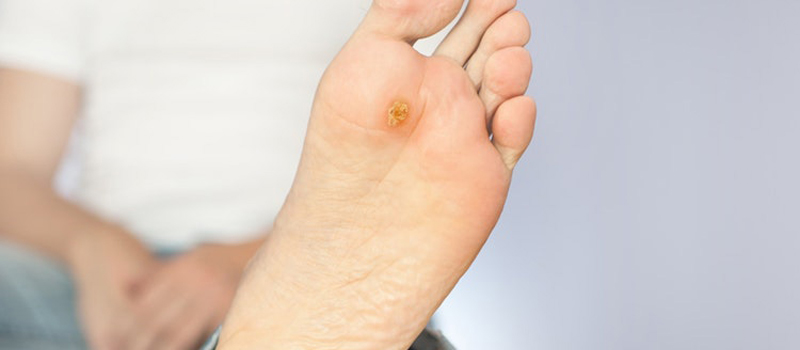How Diabetes Impacts Foot Ulcer Healing and What You Can Do About It
Foot wounds that resist healing are among the most serious and common complications faced by individuals living with diabetes. What may begin as a minor cut, blister, or pressure point can quickly evolve into a chronic, non-healing diabetic foot ulcer, increasing the risk of infection, hospitalization, and amputation.
At Washington Vascular Specialists, we believe education and early intervention are the keys to prevention. This article breaks down the relationship between diabetes and unhealed foot wounds, what warning signs to look out for, and the most effective strategies for treatment and prevention.
What Are Diabetic Foot Ulcers?
A diabetic foot ulcer (DFU) is an open sore or lesion that commonly appears on the sole of the foot, heels, or toes—especially in areas exposed to pressure or friction. These ulcers tend to progress quickly, often becoming deep wounds that are difficult to treat if not addressed early.

They are slow to heal due to:
- Reduced circulation (ischemia)
- Peripheral neuropathy (nerve damage)
- Weakened immune response
Left unmanaged, bacterial infection may spread to deeper tissues—including bone—causing conditions such as osteomyelitis, cellulitis, and even gangrene. According to the CDC, around 15% of individuals with diabetes will experience a foot ulcer in their lifetime, and many of these cases result in non-traumatic lower limb amputation if not treated properly.
Why Diabetes Slows Down Wound Healing
Chronic high blood sugar (hyperglycemia) causes damage to blood vessels, which limits the supply of oxygen and nutrients necessary for wound healing. At the same time, nerve damage (peripheral neuropathy) reduces sensation in the feet, meaning small injuries can go unnoticed—and untreated—for long periods.
This dangerous combination of poor circulation and reduced sensitivity creates a perfect storm: wounds are more likely to develop and far less likely to heal.
Warning Signs and Risk Factors
Because foot ulcers may not always be painful, daily visual inspection is critical. Watch for the following:
- Redness, warmth, or swelling
- Drainage or foul odor
- Darkened or black tissue (necrosis)
- Wounds that don’t close or improve
- Skin breakdown at pressure points
High-risk factors include:
- Smoking
- Existing vascular disease or neuropathy
- Poorly managed blood sugar
- History of foot deformities, previous ulcers, or amputations
- Inappropriate footwear

Treatment Options for Diabetic Foot Ulcers
Proper treatment begins with blood sugar control, as elevated glucose levels impair healing and increase the chance of infection. Once a foot wound has been diagnosed, treatment typically includes:
- Wound cleaning and dressing
- Debridement (removal of dead tissue)
- Infection management with topical or oral antibiotics
- Offloading (using special footwear to reduce pressure)
- Moisture-balancing wound care products
For more complex or persistent wounds, advanced therapies may be necessary, including:
- Skin grafts
- Topical growth factors
- Hyperbaric oxygen therapy (HBOT)
- Endovascular procedures to restore blood flow
Prevention Tips for Diabetic Foot Health
The best way to avoid unhealed foot wounds is prevention. Simple daily habits can make all the difference:
- Inspect your feet daily, especially the soles and between the toes
- Keep feet clean, moisturized, and dry
- Wear properly fitted, cushioned shoes with no seams or pressure points
- Avoid walking barefoot
- Schedule regular foot exams with a vascular or podiatric specialist

Trust Washington Vascular Specialists for Expert Foot Wound Care
At Washington Vascular Specialists, our team of experts is trained in the diagnosis, management, and prevention of diabetic foot wounds. We use cutting-edge imaging, advanced wound care, and minimally invasive vascular treatments to preserve limb health, accelerate healing, and prevent amputation.
For individuals with diabetes, proactive foot care is essential, not optional. If you notice any signs of a non-healing wound, contact our team today for a personalized evaluation.
Call 301-891-2500 or book your appointment online to take the first step toward safer, healthier feet.



